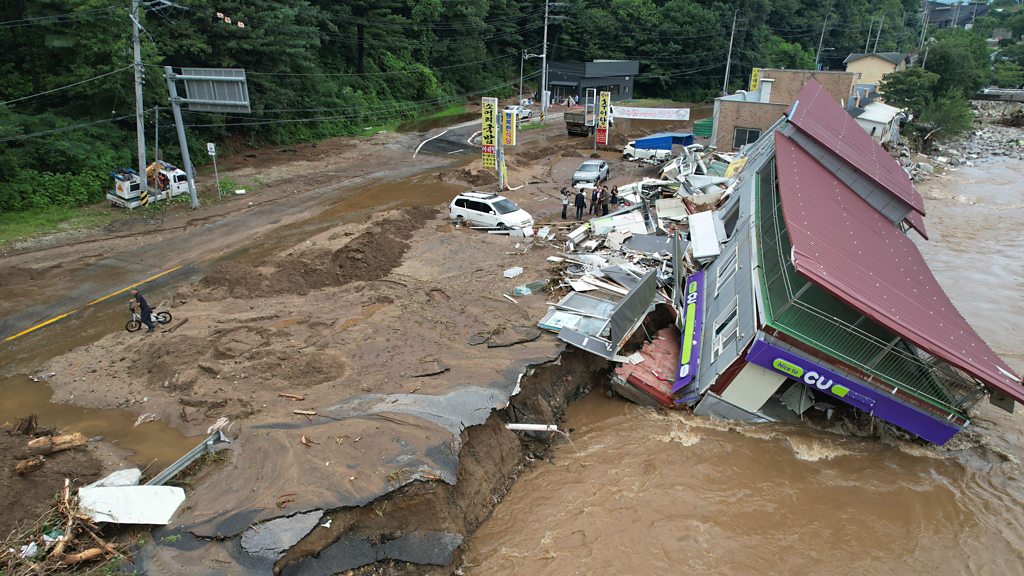Severe flooding and landslides triggered by several days of relentless rainfall have claimed at least 17 lives in South Korea, with 11 more individuals reported missing. The country’s disaster management office reported that many areas remain under threat as emergency response teams continue search and rescue operations.
The scale of the disaster is still unfolding, and authorities are bracing for a potentially higher death toll as assessments and recovery work continue.
Landslides and Floods Ravage Southern South Korea, Leaving Death and Destruction Behind
Among the most severely affected areas is the resort town of Gapyeong, where residents were seen trudging through thick mud and crossing damaged bridges to reach evacuation shelters. In the Chungcheong region, an entire village was reportedly buried under earth and debris from a powerful landslide.
These incidents reflect the widespread impact of the deluge, particularly in hilly and mountainous terrains, where the risk of landslides is high during heavy rain.
Much of the destruction has been concentrated in the southern parts of the country. Sancheong has reported six deaths and seven missing individuals. Across the affected regions, floodwaters have submerged roads, homes, and farmlands.
Thousands of animals have died, and widespread agricultural damage has been reported, adding an economic toll to the human tragedy. Approximately 10,000 people have been evacuated, and over 41,000 households experienced temporary power outages.
Government Declares Disaster Zones, Launches Relief Efforts as Heatwave Looms Large
With rainfall shifting northward and affecting the capital Seoul and nearby regions, the government has ramped up its response. President Lee Jae-myung has designated the hardest-hit areas as special disaster zones to fast-track recovery aid.
Interior Minister Yun Ho-jung urged local governments to deploy all resources to ensure swift rescue and relief operations. A multi-agency recovery effort is now underway to address the extensive damage and aid displaced residents.
Although the torrential rain is expected to subside by late Sunday, meteorologists warn that a severe heatwave will follow, posing new challenges for the affected population and emergency services. The extreme weather has underscored South Korea’s vulnerability to natural disasters, highlighting the urgent need for robust climate resilience planning and infrastructure improvements to mitigate future catastrophes.

Leave a Reply